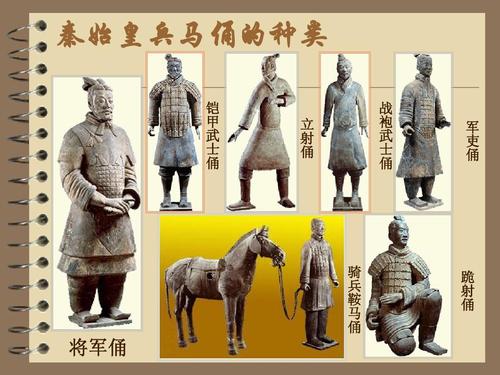
Are All Terracotta Warriors The Same?
The Terracotta Army is one of the most impressive archaeological discoveries of all time. Unearthed in 1974 near Xi'an, China, the army comprises over 8,000 life-sized terracotta figures buried with Qin Shi Huang, the first emperor of China, to protect him in the afterlife. But are all these figures identical, mass-produced soldiers? Amazingly, no.
Amazingly, no two figures are exactly alike
While they might appear similar at first glance, closer inspection reveals a stunning level of individual detail among the Terracotta Warriors.
Varied Ranks and Roles: The warriors weren't just a homogenous mass of soldiers. They were crafted to represent a real army, organized into distinct ranks and roles, each with unique characteristics:
- Infantrymen: The most numerous, these foot soldiers typically wore little armor and carried a variety of weapons like swords, spears, and halberds.
- Archers: Kneeling or standing, these figures were easily identified by their bows and quivers of arrows. They were often positioned strategically to provide covering fire.
- Generals: Distinguished by their elaborate armor, headgear, and commanding postures, these figures represented the leaders of the army.
- Cavalrymen: Standing beside their equally detailed terracotta horses, these warriors were equipped for mounted combat with swords, shields, and sometimes armor.
- Charioteers: Driving chariots drawn by two or four horses, these figures were responsible for fast attacks and maneuvers.
- Officers: Holding different positions within the army structure, officers were recognizable by their distinctive headwear and often carried batons or other symbols of authority.
- Guards of Honor: Tasked with protecting the emperor in the afterlife, these figures were adorned with more elaborate clothing and held ceremonial weapons.
Unique Faces and Expressions: Each Terracotta Warrior boasts a distinct face, sculpted with remarkable individuality. Researchers believe that artisans used a combination of molds for basic facial structure and hand-carving to add personalized features. These features include different hairstyles, facial expressions (ranging from stoic to fierce), mustaches, and wrinkles, making each warrior a unique individual.
Clothing and Armor Variation: The warriors are dressed in incredibly detailed clothing and armor that varies depending on their rank and role. From the simple tunics of the infantrymen to the ornate armor of the generals, each garment was crafted with meticulous care, showcasing different textures, patterns, and decorations.
Height and Physique Differences: While standardized to a degree, the height and physique of the figures also vary. The generals, for example, tend to be taller and more imposing than the rank-and-file soldiers, further emphasizing their position of power.
A Testament to Artistry and Craftsmanship
The individuality of the Terracotta Warriors is a testament to the skill and artistry of the Qin dynasty craftspeople. Creating such a vast and varied army was a monumental task, requiring exceptional coordination and craftsmanship. Each figure stands as a silent tribute to the artistry and dedication of its creators, offering a glimpse into the military might and cultural sophistication of ancient China.
FAQs
Q: Were the Terracotta Warriors modeled after real soldiers?
A: While there's no definitive proof, it's highly likely that the artisans drew inspiration from real soldiers in the Qin army. The level of detail in their features and attire suggests a commitment to realism.
Q: Why were the Terracotta Warriors painted?
A: Originally, the warriors were painted in vibrant colors to enhance their realism and create an even more impressive spectacle. However, much of the paint has flaked off over the centuries due to exposure to air and humidity.
Q: How were the Terracotta Warriors made?
A: The figures were created using a complex process involving molds, clay, and firing. First, body parts were molded separately and then assembled. Details like faces and hands were then sculpted by hand before the entire figure was fired in a kiln.